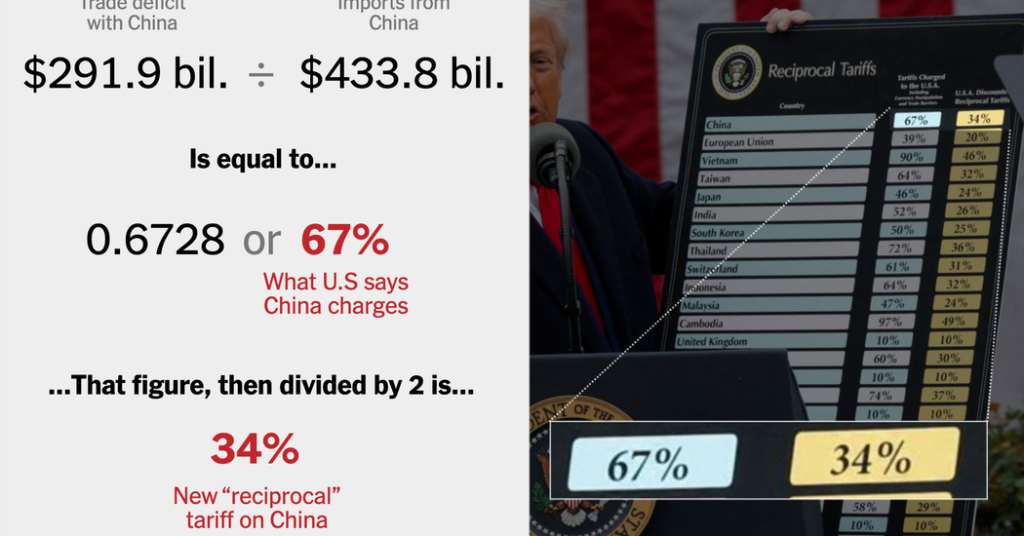As he unfurled his list of tariffs targeting most of America’s trading partners, President Trump repeatedly stressed that each nation’s rate was reciprocal — reflecting the barriers they had long erected to U.S. goods.
He said little about the methodology behind those calculations, but a possible answer emerged later on Wednesday. Each country’s new tariff rate appeared to be derived by:
James Surowiecki, a financial writer and book author, first pointed out the trend in a post on X. His comment set off widespread speculation, given that Mr. Trump previously said each nation’s tariff rate would be “the combined rate of all their tariffs, non-monetary barriers and other forms of cheating.”
Those non-monetary barriers include a host of hard-to-quantify laws and other policies that Mr. Trump sees as the primary reason that the U.S. experiences such trade imbalances in the first place. (There are exceptions: Some nations face only a standard 10 percent minimum tariff starting this month.)
In an earlier briefing with reporters, White House officials said the figures were calculated by the Council of Economic Advisers using well-established methodologies. The official added the model was based on the concept that the trade deficit that we have with any given country is the sum of all the unfair trade practices and “cheating” that country has done.
The White House later clarified its methodology in this post. Though it uses some mathematical symbols that might be hard to parse, it confirms that the formula is essentially based on the U.S. trade deficit with a foreign country, divided by the country’s exports.
“It was always going to be a really difficult exercise to come up with a very precise reciprocal tariff rate,” said Emily Kilcrease, the director of the Energy, Economics and Security Program at the Center for a New American Security and a former deputy assistant U.S. trade representative.
“Given what seems to be their desire to get something out quickly, it appears what they’ve done is come up with an approximation that is consistent with their policy goals,” she said.
https://www.nytimes.com/2025/04/02/business/economy/trump-tariff-rates-calculation.html


